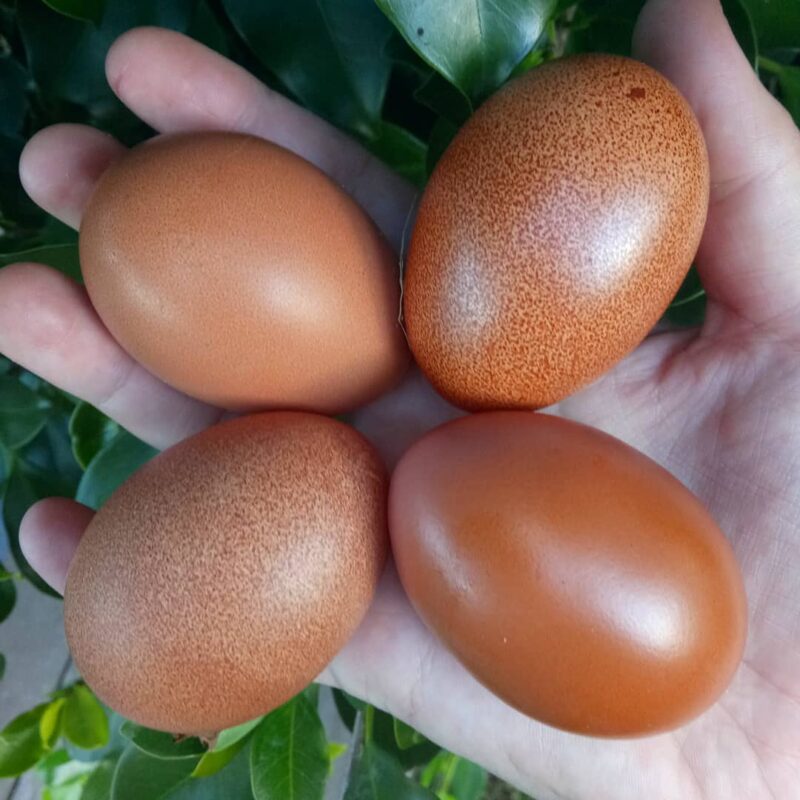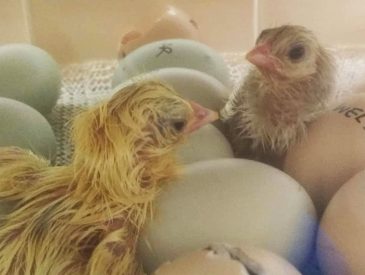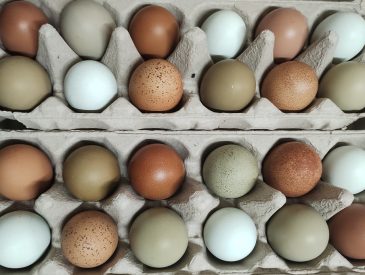Meet the flock
At Purple Tree Pets, on the scenic south coast of New South Wales, we take great pride in our unique and purposefully selected flock of chickens. Our birds aren’t just beautiful, they’re also hardy, productive, and full of personality. We specialise in heritage breeds and designer backyard crosses chosen for their temperament, unique features, and of course the rainbow of egg colours they lay.
Whether you’re new to poultry keeping or looking to add some variety to your coop, our birds are bred to thrive in Australian backyards. We offer fertile eggs for hatching via our online store, and we’re always happy to share our knowledge with other chicken lovers.
Here’s an in-depth look at the breeds we currently keep and breed at Purple Tree Pets.
Chinese Silkies
Silkies are one of the oldest and most recognisable chicken breeds, beloved for their soft, fur-like feathers and gentle nature. Originating in Asia, these birds have become popular around the world, not for their egg-laying ability, but for their role as broody mothers, pets, and show birds.
We keep a variety of colours including white, buff, grey, red pyle and partridge. Our silkies are bred for temperament and natural mothering instincts, making them perfect for hatching and raising chicks of any breed.
- Temperament: exceptionally calm, friendly and quiet. Silkies are known to form close bonds with humans and do well with children.
- Egg colour: cream to lightly tinted.
- Eggs per year: 80–120 eggs on average. They tend to lay in small bursts, then go broody, often several times a year.
- Special traits: feathered legs and feet, five toes (most chickens have four), blue earlobes, dark skin tone (known as fibromelanosis), some are bearded.
Silkies are perfect for those who want a low-maintenance, charming backyard pet, or a natural incubator for hatching other breeds.

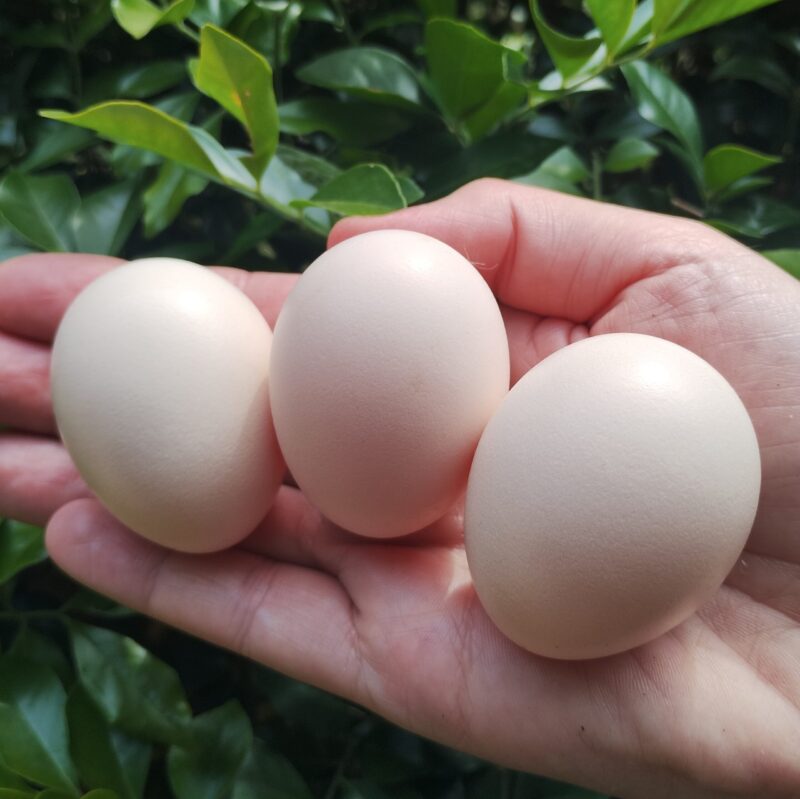
Araucanas
Araucanas are a striking, heritage breed from South America, originally developed in the Araucania region of Chile. We own a variety of colours including lavender, blue, black, splash and cuckoo. They’re best known for laying pale blue eggs, thanks to a pigment called oocyanin that is deposited on the shell as the egg is formed. Unlike many other coloured-egg layers, the blue colour permeates through the entire shell.
In Australia, Araucanas are usually bearded and often crested, with a small pea comb. They’re medium-sized birds that are active foragers, making them ideal for free-ranging environments.
- Temperament: curious, alert and quite independent. While not overly cuddly, they are intelligent and can be very entertaining.
- Egg colour: blue and green shades which can vary slightly between birds.
- Eggs per year: around 180–220 eggs annually.
- Special traits: pea combs, tufts, crests, and a unique posture. Some Australian Araucanas are clean-faced, while others have more distinct tufts and beards.
Araucanas bring not just colour to the egg basket but also a bit of mystery and charm to the coop.

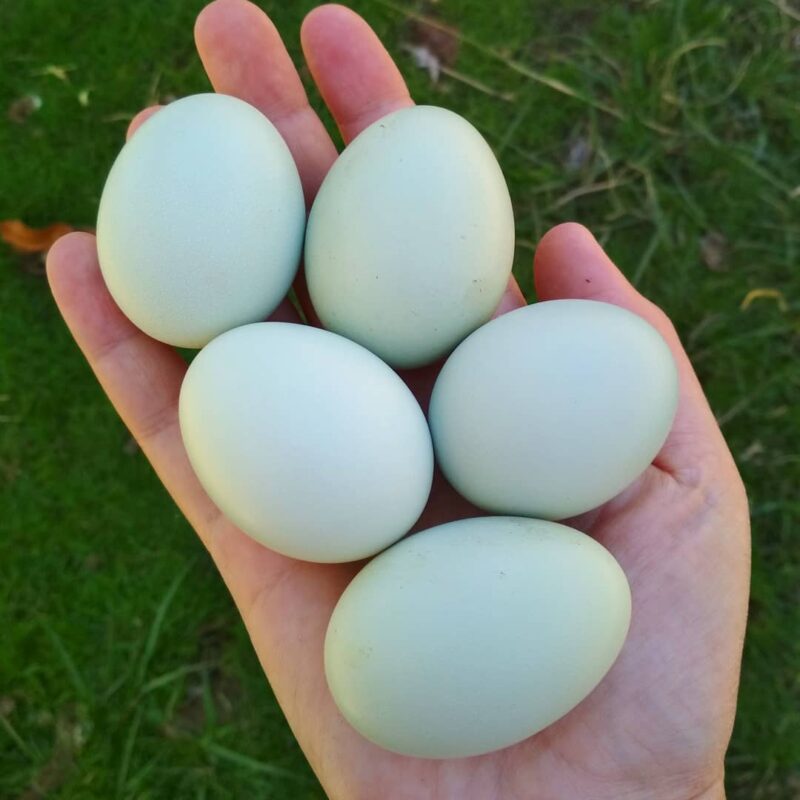
Marans
Marans originated in France and are famed for their dark, rich brown eggs. The darkest eggs are laid at the start of the season and gradually lighten as the laying cycle continues. We own blue copper, cuckoo and splash colour varieties which are especially beautiful, with soft blue, silver and gold tones throughout their plumage.
We breed our Marans for both their egg colour and a gentle nature. These birds do well in a range of climates and are suited to suburban and rural homes alike.
- Temperament: calm, friendly, and not easily spooked. They’re typically happy to be handled and get along well with other flock members.
- Egg colour: medium to dark chocolate brown, sometimes with speckles or bloom.
- Eggs per year: about 150–200 eggs per year.
- Special traits: feathered legs and toes (a breed standard), soft but solid frame, and broad build.
Marans are a wonderful dual-purpose breed, offering both beauty and rich-coloured eggs for your collection.
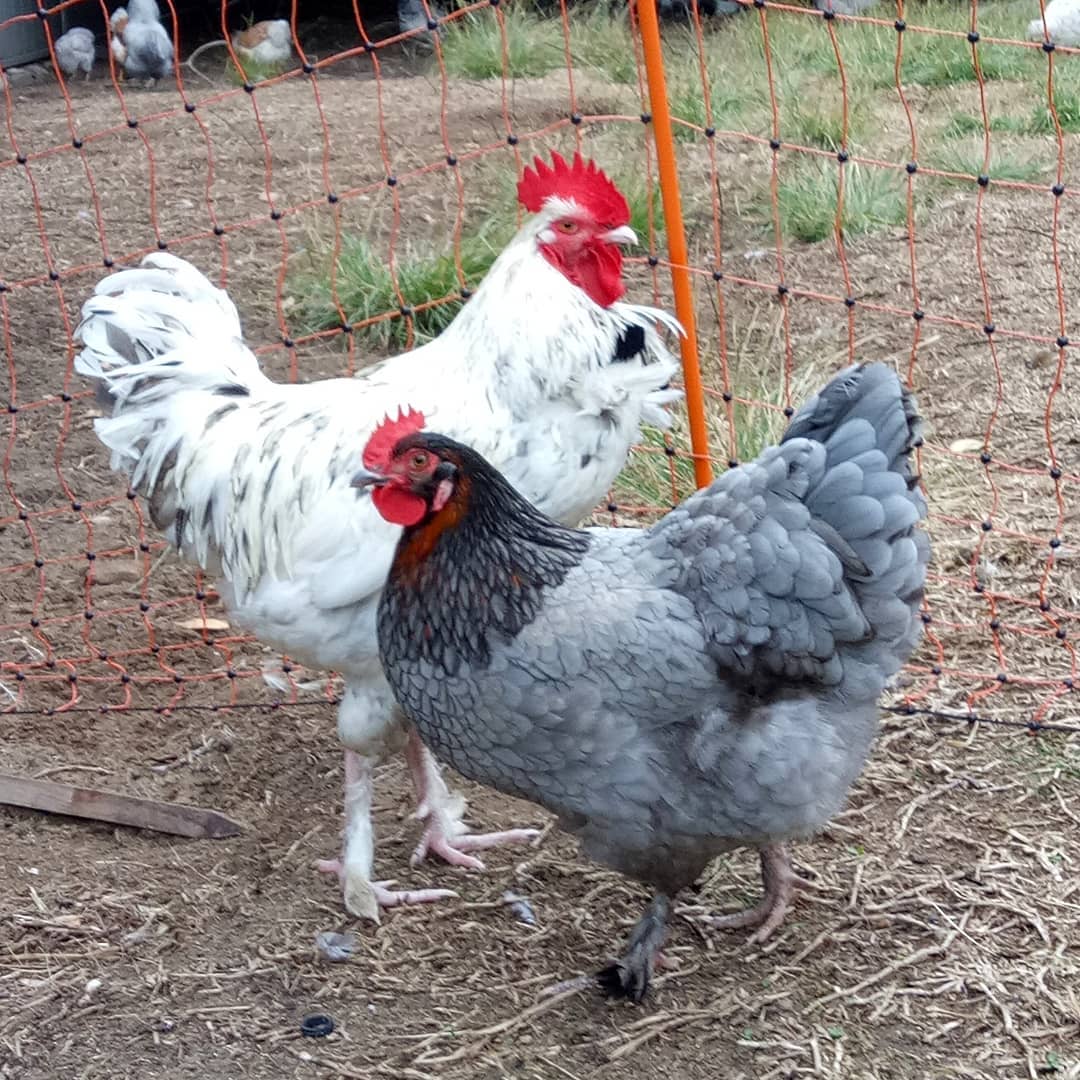

Mixed Breed Rainbow Layers
Our rainbow layers are a mixed flock made up of heritage breeds and colourful egg layers which free range on our property. This pen includes Araucanas, Easter Eggers, Olive Eggers and Marans. Each hen is selected and bred for egg colour, hardiness and temperament. The resulting eggs range from soft blue to sage green, olive, dark brown, and speckled hues.
These birds are often first or second generation crosses, and no two are exactly the same. That means each clutch of fertile eggs is a surprise, with the potential for a truly multi-coloured egg basket.
- Temperament: active, friendly and curious. These hybrids are great backyard layers, often more robust and resilient than purebreds.
- Egg colour: a mix of blue, green, olive, brown and spotted eggs, depending on the individual hen’s genetics.
- Eggs per year: 180–250 eggs, depending on the cross.
- Special traits: a wide variety of feather patterns, colours and crests. Some may have muffs, beards or feathered legs, and most are medium to large in size.
This is the ideal pen for families and backyard keepers who love colour, variety and reliable egg laying.


Understanding egg colour genetics
One of the most fascinating things about keeping chickens is the variety of egg colours they can produce. From soft blue and olive green to deep chocolate brown and speckled cream, the colour of a chicken’s egg is determined by genetics, and when you start mixing breeds, things get really interesting.
Chickens lay eggs in only a few basic shell colours: white, blue, brown and their combinations. The final colour of the egg depends on two main factors:
- What pigment is deposited on the egg shell, and
- Where and how that pigment is applied during egg formation.
Let’s break it down.
Blue eggs
The blue colour in eggs is caused by a pigment called oocyanin, which is applied early in the egg’s formation and penetrates through the entire shell. That means blue eggs are blue both outside and inside the shell. This trait is genetically dominant, so if a hen carries the blue egg gene, she’ll pass it on to about half her offspring (if crossed with a non blue layer).
Breeds that lay blue eggs include: Araucanas, Cream Legbars, Easter Eggers

Brown eggs
Brown egg colour is caused by the pigment protoporphyrin, which is added late in the egg’s formation and sits on top of a white shell. Because of this, the colour is only on the outside, and can be scrubbed off. The shade of brown depends on the individual hen and the genetics involved, ranging from pale beige to deep chocolate.
Breeds that lay brown eggs: Marans, Welsummers, Australorps, ISA Browns

Green and olive eggs
Green and olive eggs happen when a hen inherits both blue and brown egg genes. The egg starts out with a blue shell, and then a brown coating is applied, resulting in shades of green, olive, or sage depending on the strength of the brown layer.
Crossing blue layers with dark brown layers (like Araucana x Marans) can produce dark olive or khaki eggs, while lighter brown layers (like Isa Brown x Araucana) produce more pastel greens.

Mixing for rainbow results: F1, F2 and beyond
When you begin crossbreeding chickens for egg colour, the results become even more exciting. Here’s a basic guide:
- F1 (first generation)
Blue layer (e.g. Araucana) x Brown layer (e.g. Marans) = Green or olive egg layer
White layer x Blue = 50% chance of blue layers
Blue x Blue = Blue
Brown x Brown = Brown
Blue x Green = Olive or unpredictable shades - F2 (second generation)
If you breed your coloured egg layers to each other, you’ll start to see even more variety in both egg colour and intensity. This is where you get speckles, deeper olive tones, khaki eggs, or the occasional throwback to white, tan, blue or brown. - Speckles and bloom
Some hens naturally lay eggs with speckles or a “bloom” — a powdery film that can make the egg look pinkish or dusty. These are often more about the individual hen than the breed, but they can be encouraged through certain cross combinations.
What to expect from our rainbow layers
At Purple Tree Pets, our rainbow layer pen includes Araucanas, Easter Eggers, Olive Eggers and Marans. These birds have been bred specifically to give a range of blue, green, olive, chocolate and speckled eggs. Because we use both pure and crossbred birds, each chick you hatch can be genetically unique, with its own feather pattern, comb shape, and future egg colour.
This means:
- You may hatch chicks that lay eggs different to their mother’s colour
- The same breeding pair can produce several different egg colours in their offspring
- You’re adding long-term variety and beauty to your backyard flock
For those wanting a colourful egg basket or looking to start a breeding project of their own, our fertile eggs are a great way to begin.

Fertile eggs available now
If you’re interested in starting your own flock or adding some unique genetics to your hens, we offer fertile eggs from all of the above breeds. Whether you’re looking for reliable blue egg layers, gentle pets for the kids, or a vibrant rainbow of eggs, we’ve got something to suit your coop.
All our hens and roosters live in well-maintained, free-range conditions with plenty of space, natural forage and fresh air. We collect and package fertile eggs with care to give you the best chance of hatching healthy, strong chicks.
Browse what’s available on our online store.







